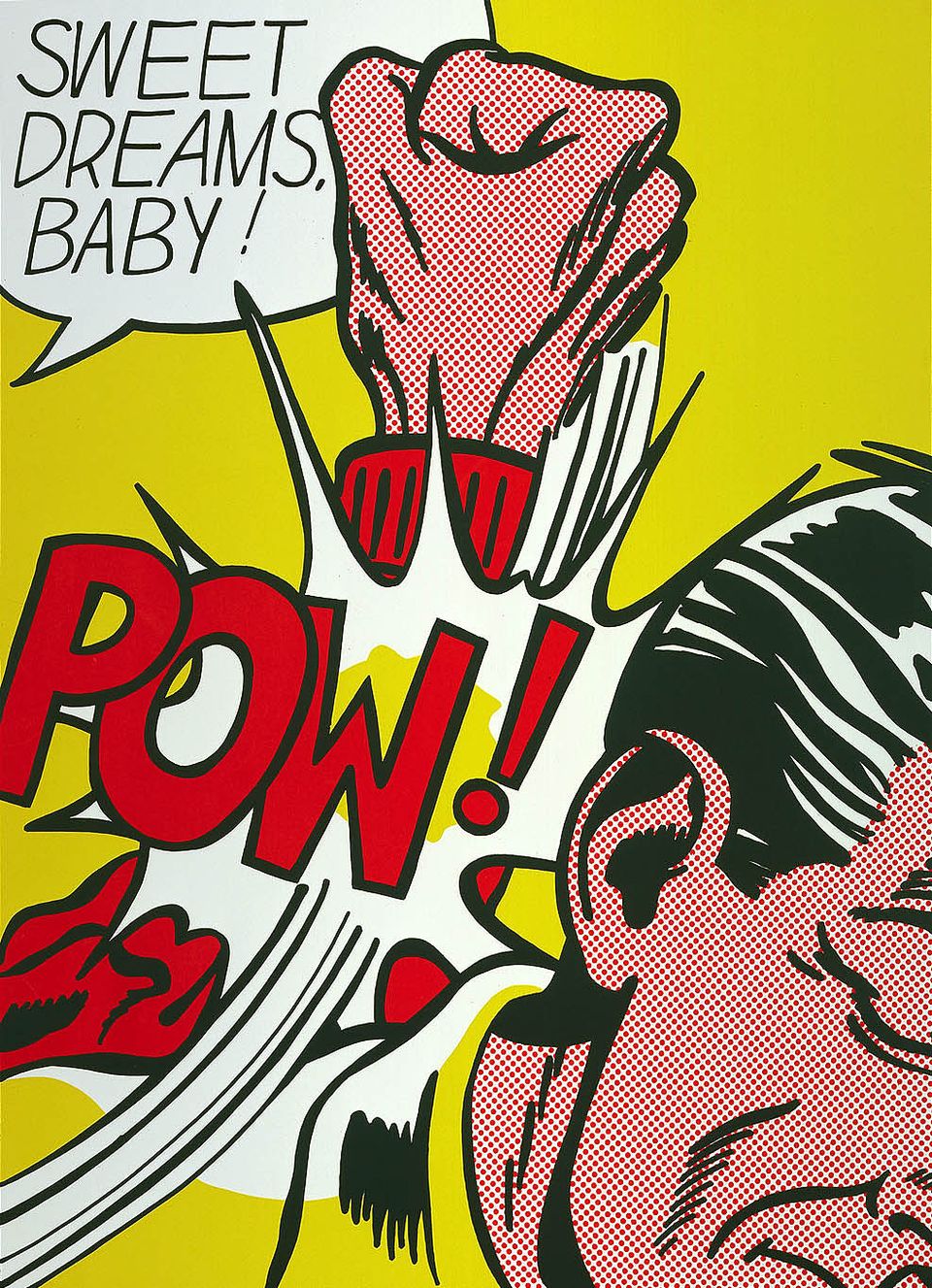
Pop Art Prints has just opened in American Art's graphic arts galleries. The installation showcases thirty-seven works from the museum's extensive holdings of works on paper from the 1960s and 1970s. The featured prints are bold, bright, and filled with references to popular culture. Four lively prints by James Rosenquist are showcased in the installation. Nina Williams, a curatorial assistant at American Art, writes about one of Rosenquist's pieces in the show.
In Rosenquist's lithograph titled Expo 67 Mural Firepole 33 x 17'. two uniformed legs twist around a shiny fire pole. Exuberant white lines stream across a red and yellow background, suggesting commotion or celebration. This small print was inspired by a much larger but identical painting titled Fire Slide that Rosenquist exhibited at Expo 67, the 1967 world's fair in Montreal.
Rosenquist's painting Fire Slide was included in American Painting Now, a contemporary art exhibition held in the American pavilion of Expo 67. The exhibit featured large-scale works by the "who's who" in 1960s American art, among them: Robert Indiana, Jasper Johns, Andy Warhol, and Robert Rauschenberg. Expo 67 promised to transport visitors through elaborate displays of art, technology, and material culture from sixty-two countries. Maverick architect R. Buckminster Fuller designed the American pavilion, a twenty story geodesic dome to house exhibitions of American creativity and ingenuity. Attracting more than eleven million visitors over six months, the American pavilion was the most popular of the entire exposition. Rosenquist's painting was thirty-three feet high by seventeen feet wide. It was so large that had to be made in twelve different pieces and then put together on site.
Because the pavilion was so intimidatingly large, the artworks on display for American Painting Now had to be chosen carefully. With its clean lines, solid colors, and recognizable forms, Pop art stood out beautifully against the flurry of activity in the pavilion. Pop art also illustrated the American zeitgeist through an accessible language that millions of visitors could understand. The artworks were suspended from the dome's ceiling alongside exhibits such as Destination Moon, a display of NASA's Apollo space program that included actual space capsules and a simulation of the lunar landscape.
Perhaps the most surprising aspect of Expo 67 Mural Firepole 33 x 17' is the meaning behind its fragmented yet straightforward image. Why would Rosenquist choose to depict the legs of a man sliding down a fire pole for the World's Fair? According to Rosenquist, the work represents the U.S. president acting as a fireman who puts out fires around the world. I find it fascinating that he made such a politically charged work for the expo. What's more, those who saw the painting at the time had no clue of the subversive meaning behind the colorful artwork. The image was clearly significant to Rosenquist, as he also made a smaller forty-eight by twenty-four inch painting of it that year. And by producing an edition of forty-one lithographic prints, he ensured that the image would be seen by an even wider audience.
Unfortunately, Fire Slide was recently destroyed in a fire at Rosenquist's studio. This makes me all the more grateful that the print version in the American Art's collection will forever preserve the history behind this significant work.
Pop Art Prints will be on display until August 31, 2014.


















